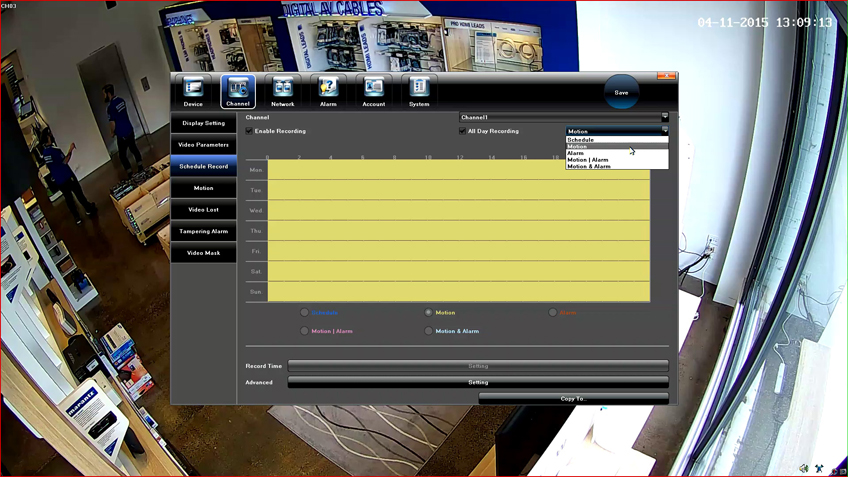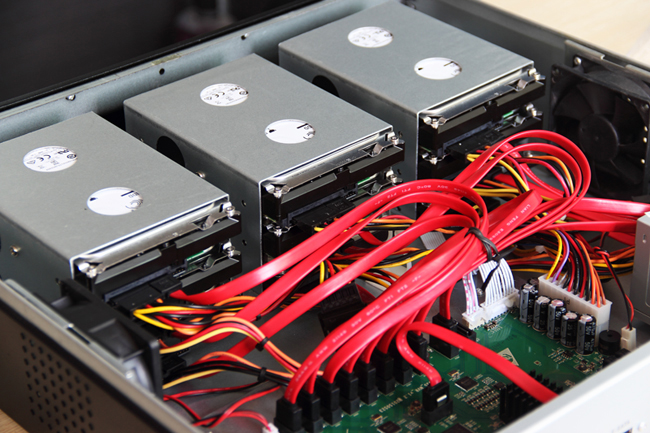
How to choose the right H.265 NVR for video surveillance?
NVRs are now replacing the DVRs to server the video recording function to every digital video surveillance system no matter it is for home security or commercial video surveillance. In past, when we chose the DVR, we usually focused on the recording capability of the recorder. We would carefully read the product specification to select the right one that offering full-time frame rate video recording at higher image resolution. Currently, most of NVR only supports H.264 video standard, as the H.265 is the trend and future, here we intend to provide you some tips for choosing the H.265 NVR.
1#. Select the one offering higher video decoding performance
Although both DVR and NVR are recorders for the video surveillance system, but the NVR doesn’t provide the video recording function. After receiving the digital video data from cameras, the NVR writes the data on HDDs directly. Compared with DVR, there is no video compression process needed.
However, the same as the DVR, the NVR is also responsible to decode the video. Decoding process happens when users playback the recorded video footage. The performance of NVR’s core processor will determine how many channels the NVR can playback simultaneously. For example, a Hisilicon Hi3536 based NVR is able to offer 16-channel video simultaneously playback at 1080p resolution.
2#. Incoming network bandwidth is very important.
Different from analog DVRs, a regular NVR doesn’t have physical video inputs to receive the video signal from cameras. Instead, it only has an Ethernet port (RJ45) to connect to the network. Through the network connection, the NVR can receive the video data from all connected IP cameras on network. The total incoming network bandwidth that NVR supported will determine how large the video data it can handle.
To explain this clearly, you can check our high-end product – EN8433, it supports total 256Mb/s incoming network bandwidth. The NVR therefore can accept video streams from up to 36 sets of 4K UHD network cameras (36x7.1Mbps = approx. 256) . The higher incoming network bandwidth allow NVR to support more video streams or higher image resolution.
3#. Storage capacity
How much storage a NVR can hold is an important factor to consider. Small size or lower end NVRs often allow for 1 or 2 hard drives. The more advanced units can often accommodate 4 or 8 hard drives internally. Some commercial NVR will allow for RAID (redundant storage) configuration. To know more about the RAID function, you can read our early writing - Enterprise-grade NVR and RAID Level Knowledge. It’s recommended to choose the NVR has eSATA port, the eSATA port allows your NVR to extend to unlimited storage capacity.

4#. Smart video analytics
A set of smart standalone NVR can not only provide you reliable video recording capability, it should also help you on video surveillance efficiency. According to the research, the average amount of time someone can focus on video footage is only 20 minutes. Today’s NVR can provide many smart video analytics, lower end product can provide you the basic motion detection, once it detects image change, the NVR can trigger recordings and alarms. Some advanced network video recorders have complex video analytics built-in can alert you to suspicious activity. Applying video analytics can improve the way you run your business. In addition to motion detection, Unifore's NVR can support many advanced video analytics including perimeter zone detection, object counting, missing object detection, as well as allowing users to customize the detection rules.
5#. Different types of NVR, how to choose?
Obviously, video surveillance industry is moving from analog to digital video surveillance, this trend makes NVR flourish in the market. However, do you really know much information about the NVR? NVR can be divided into VMS based NVR and standalone NVR two categories, the former product is a video management software, users can install the VMS on traditional PC to setup an video surveillance system.
The hardware NVR, is provided to users by VMS+hardware way. Users don’t need to buy hardware, can use the NVR to setup video surveillance system. Hardware NVR including embedded NVR and PC based NVR. Embedded NVR adopts video recording dedicated hardware and embedded Linux OS, while PC-based NVR adopting common PC hardware to provide users hardware+software solution by using video recording optimized hardware.
Embedded/Standalone NVR is based on dedicated hardware to provide the best functionality, it has embedded Linux OS, including video management software. Embedded NVR has reliable, rich interface, exclusive for video surveillance, good interoperatebility and low cost advantages. However, embedded NVR can’t allow users to change the OS and software. The producer may release new firmware, allowing users to upgrade or update the firmware to fix bugs or support new features.
PC-based NVR based on common PC, can be installed with embedded Linux OS or Windows OS, it’s a PC structure, with flexible and scalable advantages, less development on hardware design, good interoperatebility. However, the system may have few interface, poor hardware integration, poor stability.
VMS based NVR also uses the regular PC as the hardware, it usually installed with Windows OS, users can buy the VMS from different developers, however VMS may encounter compatibility issue.
6#. Why use H.265 better than H.264?
H.265, sometimes refereed to as HEVC, HEVC is state-of-the-art in video compression and allows the usage of advanced and extremely complex video compression tools to remarkable coding performance. Based on BBC’s study, the H.265/HEVC standard can achieve more than 50% bitrate reductions compared to its predecessor H.264/AVC for the same image quality. If using H.265 video surveillance products, you can save 50% network bandwidth and video storage capacity, greatly reduced the running cost.
7#. Why some NVRs have more than one Ethernet ports?
With purpose to simplify the installation, many NVRs can support Power over Ethernet technology, the camera therefore can directly plug to NVR. A 16-channel NVR support PoE technology may have 17 separate Ethernet ports, 16 ports support data and power injection, and the other one enables NVR to connect to network (the router/network switch). Some Enterprise level NVRs may have more than one Ethernet ports, These ports usually support 10/100/1000Mbps (Gigabit) network bandwidth, allowing the NVR to connect several different network.
Get My Latest Posts
Subscribe to get the latest updates.
Your email address will never be shared with any 3rd parties.
Scan me




